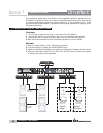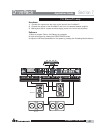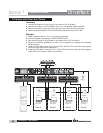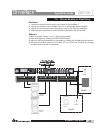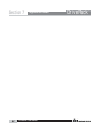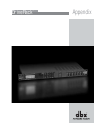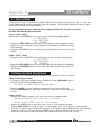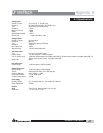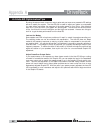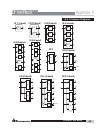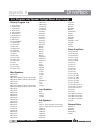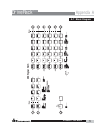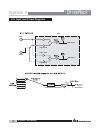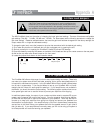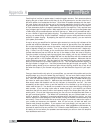
®
74
Appendix A
DriveRack
™
One thing that is critical to system setup is maximizing gain structure. Gain structure refers to
aligning the gain of each device so that they all clip at the same point, and the noise floor of
the entire system is at its absolute minimum. Quite often PA systems are setup with the ampli-
fier input controls turned all the way up in the incorrect assumption that this is the only way
to get the maximum output level. Amplifiers are fixed gain devices, turning down the amplifi-
er input attenuators does not change the potential output of the amplifier; it only requires more
input voltage to get full output power. Many amplifiers will clip with an input level greater than
+6 dBu when the input attenuators are turned all the way up. Most mixing consoles can deliv-
er over +18 dBu of output level before clipping. This means that with your amps tuned all the
way up you are sacrificing 12 dB of headroom, resulting in poorer noise performance and the
potential of system clipping. By adjusting the amplifier controls properly, you can maximize
your system performance.
A way to set up your amplifiers for maximum gain structure is to use the clip indicators of the
console and amplifiers themselves. Disconnect the output of the amplifier from the speakers.
Run a continuous signal (pink noise or sine waves – many test CDs are available that have these
types of signals) through your console. Turn up the output of the console until it begins clip-
ping. If there is no clip indicator on the console then use the output meters; most reputable
console manufacturers use red LEDs at the top of the meters to show the onset of clipping.
Once the console is clipping, back the output gain down slightly until the clip indicator turns
off. Run this signal through the DriveRack 260 and into the amplifiers with the crossovers and
output gain section in the DriveRack 260 set for your particular speakers. Make sure that the
output limiters are turned off. Run this signal into the amplifiers and turn up the input attenu-
ators until the amplifier clip indicator begins to turn on. Turn the attenuators down slightly, so
the clip indicator no longer is on. You have just maximized the gain through your system. This
amplifier setting should give you maximum gain without clipping, another way of say this is
that when the output of your console is clipping you will also be at the clip point of your ampli-
fiers.
Once you have found the clip point of your amplifiers, you can mark this position and turn the
amplifiers back up to the point where they are clipping. You can now use the output limiters
in the DriveRack 260 to protect the amplifier from clipping no matter what you do at the con-
sole. With the amplifiers clipping, now go to the Limiter page of the DriveRack 260 and turn
the limiter for each output band on. Make sure that the threshold is all the way up to +20dB.
Now slowly reduce the threshold until the clip indicator of the amplifier turns off. You have
successfully set the output limiter up and the amplifier will not be able to go into clipping no
matter what the input is. You should now proceed to the next output band and go through the
same process. If you are using a sine wave to create clipping in your amplifier you should
make sure that the sine wave is within the frequency range of the output band that your are
working with. Once all the limiters are set up you can now turn the amplifiers back down to
the gain maximized position. The Wizard will automatically set your limiters based on your
choice of amplifier. Because of component variances within the amplifier circuitry, you may
need to adjust the limiter settings by a few dB after running the Wizard to ensure that they are
set correctly. Once all the limiters are set up and the gain is maximized, reduce the output of
your console and reconnect your speakers. Now for the fun part, sit back and send your
favorite music through the system. If your system is not loud enough, you may want to con-
sider an amplifier or amplifiers with greater output power. Most loudspeaker manufacturers rec-
ommend an amplifier that can provide 1.5 to 2 times the rated RMS power of the speaker. If
this setting is too loud when your speakers are reconnected you can turn down the amplifier
input attenuators even more.



